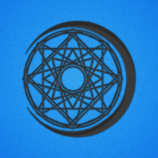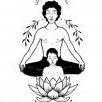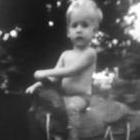Search the Community
Showing results for 'transformation'.
Found 2,697 results
-
It seems, generally speaking (not excluding myself from this generalization) , that most of the forums is used for "finding other like-minded individuals to interact with" but simply leads to endless mental masturbation. And of course there's plenty of other variables at play other than just the forums that would attribute towards transformation - but it seems like trying to sift through everything that is said in hopes that there's one nugget of truth seems less likely when you account for the fact that there's no guarantee you'll even notice the nugget of truth. all in all, do people who achieve true transformation reside in this forums, or is this just another fly-trap for egos and the one's who have achieved self actualization and or enlightenment simply move on?
-

DrewNows replied to Rilles's topic in Spirituality, Consciousness, Awakening, Mysticism, Meditation, God
Yeah loved it on rogan. Incredible transformation however it seems he’s almost got a vendetta against all activities in relation to his old self it’s blinding his perception and could be worth integrating -

Forestluv replied to Rilles's topic in Spirituality, Consciousness, Awakening, Mysticism, Meditation, God
A nice interview on DMT and personal transformation to be shown on ESPN. Personally, I think the interviewer spent too much time in Mike’s personal story, rather than awakening to the actuality of reality. It sounds like Mike “went there” based on the way he described ego death and being nothing. Nonetheless, I think it’s a great outreach to the mainstream. I think a lot of viewers will be impressed with Mike’s personal transformation and may pause to think “Mike was a troubled mess and now looks so content and peaceful. What’s the name of that stuff he smoked, again?”. These types of clips showing the potential of psychedelics is helpful toward evolving the social consciousness. -
God is infinite and unbounded. For that to be and for God to love itself it will not suppress anything. That includes all forms of suffering. That includes parts of itself which spits profanities and hates itself. The ego mechanism is designed in a way to avoid suffering where possible and overcome it when it happens. Of course you will demonize it. But to become more conscious of everything you must look beyond the judgments of ego. There just is. Being infinite has dramatic ramifications not many can accept. This does not mean to be complacent to suffering. As you become more conscious you will aim yourself to not demonize those who inflict it but understand those who do it and to accept their necessary existence right now and will align yourself to reduce it. If all is you then treat everything as you would yourself. The Bible has a lot of great teachings but you likely won't be able to grab them until you yourself become more conscious. I've went full circle believing in Christianity to hardcore atheism and now saying truth in both sides. Every teacher highlight certain aspects of the absolute. Usually those they see missing in people. We are great with dualism so no dualism is emphasized. We do fantastic with hate but not enough love. And so on. Whatever truth lies in the Bible you can find out yourself. Jesus found it. The Buddha found it and so did many other people. You can too. Psychedelics can do a lot. It will shove everything about yourself in your face and make you deal with it. If you do, you'll come out on the path of transformation. If you don't and resist it, well you can't. The inability to have control and insights that break your worldview or even just losing yourself to story upon story can lead to some negative effects. Take at your own risk. The detrimental ones are rare and even rough trips can give you a lesson. Of course don't take my word for it. You can figure this out on your own.
-

Salvijus replied to Mada_'s topic in Spirituality, Consciousness, Awakening, Mysticism, Meditation, God
If you want to stay there for 2-3weeks volunteer, do your sadhana and reside, then there are no requirements for it, but if you you want to stay there for a long period and be a fulltime volunteer then usually they ask you to get initiated into at least one of their programs like inner engineering or hatha yoga or smth. Physical fitness requirement are just for those who want to do some other programs like sadhanapada (7month process for inner transformation) or smth. It's a different ball game a bit. -
So I've read psycho cybernetics before and am about to reread it. I've been trying to launch a YouTube channel for quite a while but have some definite holdups. Noticing I don't feel fully confident in myself as a leader or as an authority, worried about judgment from friends and family, and just not really having many positive associations with creating and releasing content. I'm curious who here has undergone a radical, deep identity level transformation; how long did this take you and practically speaking what techniques did you use to reshape your self image, thoughts, emotions and ultimately your actions in the world? I've used affirmations and visualizations in the past so I may already have the answer here, would be nice to hear directly from people who have radically changed their life with these techniques.
-
I am definitely convinced of that. I'm starting to dabble in transformation of emotions.
-
@Leo GuraJust thought of something else that I would like to mention to you. I thought you can't get beyond the absolute. The absolute means that "you" are God. When "you" become God, that means that you're the No-self; then you make a transformation into everythingness, and then you ride the ox back into your ego (& world) with bliss, indicating that this world is the "to love realm." You can't get beyond this. That's what I thought. Once you are back into your ego, you have to observe your surrounding circumstances. Are you in adversity? Because I noticed that ppl who report the absolute without inducing it were in an adverse time in their lives. I was. I realized this. A war was taking place outside of where I lived. I was hiding while ppl outside were being stabbed to death. In my case, it reminds me of a metaphoric saying of Jesus, "Jesus, it's nice to finally meet you. Tell me something. When I look at this map of my life, you were always walking beside me. Why is it that in the most difficult time in my life I'm all alone? I can only see my footprints on this map? You're not walking beside me anymore." Then Jesus replied, "those are not your footprints. They're mine. That's when I carried you." The last line of the Jesus quote reminds me of Riding the Ox Backwards, when "you" are carried back into your ego by "yourself" because you're still one with God while making that transformation. And Leo, I'm also wondering, since you mentioned these things in your videos... What does experiencing the absolute have anything to do with brain chemistry? What does it have to do with being more spiritually "blessed?" To me, it has to do with a lot of factors. Maybe one of them being the decisions you make in your life.
-
because life is a paradox. it’s another catch 22. being enlightened means to transform, not to survive. but in transformation the old remains as a part of the new, the true self remains, so the current form needs to look out for it’s true form, to let the old die and rebirth itself. the only way to stop rebirthing is stepping out of society - completely, but even then it can’t be helped life still needs a form. form is not random.
-
I've been exploring black magic for some time now, especially the alphabet of desire. Black magic is the path of non-existence, emptiness. I found it very strange that the alphabet of desire would be placed there, but I'm finally starting to piece together what it actually means. This is the art of spiritual alchemy, transformation of emotions. Its purpose is to expose the underlying oneness of experience and uniting it in its meaninglessness. It seems to be the bodily counterpart of random belief. It has beautiful geometry, but I'm not too interested in copying it here.
-
Synchronicity is a meaningless word. There is nothing that corresponds with it in actuality. To have the notion of cause and effect you need clear separation between that which causes and that which is caused. However, all of existence is interdependent. As you look around, there is no single thing that has essence of its own. All of it is in-between, each thing depends on other things that depend on other things ad infinitum. It has infinite depth (this caused that and that caused that thing), and breadth (this is only meaningful in its environment). As the present moment unfolds, it always does so through transformation, in plenitude. Things that transformed are no longer here, but are somehow contained. Things that are here will dissolve just before you have the chance to understand and exploit them. If they come again, they will be different just so that your will to manipulate them is the ingredient of transformation. Synchronicity is the feeling that you experience when you witness the flowering of the present moment. It means: it's fucking magic and I have no clue how this shit works but I can't deny that it does. It does not seem to need me to understand it though, so I'm gonna enjoy myself while I'm allowed to live.
-
@kieranperez First of all yes I like the technique a lot, yet because I like writing and I loved journaling at the beginning of my meditation journey/self-actualization journey. Since then it is a valid tool for exercises for PD and just mental health aspects, like constant rumination etc. I used and still use a physical journal. Ken or some other author mentions that it takes some time and one is supposed to observe his behavior, in the description about shadow work. I started in 2017 with shadow work regularly and wrote, like each fking day longer than the recommended time. Because of emotional triggers like for me... intelligence, arrogance, hate, resentment, emotional pain and a lot of situational triggers plagued me. Which brought insight into the emotional state. It clearly helped me describing emotions in a more granular manner + I felt I was integrating a "shadow". Or the unconscious self. I still sometimes wonder that new behaviors and interaction paradigms show up, yet they are small, yet big inside. Also, I found lost identities and tendencies have been unearthed, I feel more healthy in that regard to most people who triggered me for instance. (family members, classmates etc. romantic interests ) I find the 3-2-1 process is a vanilla version of shadow work from what I have a presentiment about what could work more effectively. I really like this technique since I can't afford to go crazy, which I feel breathing practices could make me do. I used to smoke weed and had a heavy emotional body load then and I keep feeling this pain inside my chest solar plexus where I feel my "shadow" or energy lingers and had a couple of breakthroughs now with meditation and the shadow work always made me feel the spot. One is supposed to take in the feelings of what one wrote down, if you are an emotional type, you can use that to your advantage I turned on music and wrote what I felt, also not and wrote what I felt. To the degree where I wanted to cry, cried, or was mad, or surprised at the end, also that I integrate that feeling, identity (persona or alter-ego) so I sit for a couple of seconds not long. After a 10-20min session of figuring out and going through the process, in my opinion, that is fine. I also tried psychedelics (LSD) more than a handful of times and wrote down emotional triggers and insights I had which I could do shadow work about. The psychedelic experiences themselves helped more than the practice that is why I want to try shrooms. This changed me more than shadow work, although shadow work at least the 3-2-1 process changed me gradually over time. I was, for instance, the one who is arrogant and hubristic, wanted to express intelligence (be smart), and anger has decreased, yet I still struggler with this one, also to be expressive or even feminine and masculine. I can see what you mean I felt the same too, yet in the description from Ken he says to watch one's behavior for weeks, days and months to come. So, I stuck with it and I feel a changed definitely, a major changed. Depending on what is major, but behavior and interaction change is sort of major. Integration happens (for me) naturally, you unearthed the belief, emotion, situation, or alter-ego and are free to express it. It is a bit odd to express it, for instance, a new persona. But some are just fun. TBH I am going to be an arrogant prick, but unearthing intelligence and arrogance were madly fun and it is fun, yet it is not TOXIC anymore or at least not that TOXIC anymore. Sometimes it hurts in a pissy sort of feeling. Ken Wilber also mentions Shadow Work never ends in his Audiobook Integral Transformation and some shadow traits are inherently biological. So, cleaning up never ends apparently. BTW: you posted the same post about Wilber as me,(Multiple Intelligence video series last week or so) in case you want to know more about the 3-2-1 process, you can click on integral life on community my username is once3800. I wrote a question about shadow work and received an answer from a lady who has 38 years experience in yoga and now did the 3-2-1 process. For a different take on the issue. I also really enjoy the video series of Dr.Keith and Corey. Here is one about shame I took some notes on the video over one weekend. https://integrallife.com/integral-mindfulness-and-the-evolution-of-shame/ Besides that if the approach is to rational, I would try the breathing techniques like shamanic breathing, I feel I penetrate the core and can't go fully crazy atm. When things are more save yes, I will try it, but for now vanilla version. Testing them for more than 3-4 months, ideally, half a year is a good approach IMO. Others might think otherwise.
-
2.thumb.jpg.8497cca75ed65e3964a984883298bb4a.jpg)
MsNobody replied to MsNobody's topic in Spirituality, Consciousness, Awakening, Mysticism, Meditation, God
@Salvijus It seems like your vision of women is very limited because you probably have your image about how a woman should behave, it's like Leo always says, God is not only beautiful things, its also war, suffering and all the bad stuff, you can consider my way of expressing myself as weird, and 4 years ago when I was repressed by my culture and by abusive men's figures I would pretty much agree with you, with time I learned how to not be ashamed of my body and my curves, to be proud of being a woman in a society where the patriarchy has been in power for thousands of years, now I see my body as a temple and sacred, you talk a lot about the feminine energy being very inclusive and receptive, about it embracing all things around them, are you embracing your feminine side? Are you using of that inclusiveness you talk about to embrace all things and all forms o expression of the universe around you? To have love and compassion to all forms of expressions besides the ones you consider as right? I let go of the thought that women should behave in a certain way 3 years ago, it's been a process of cleaning myself from ideologies and social conditioning, I have a lot of masculine energy within me and this masculine energy gave me "balls" to face many men and even better gave me the freedom to express myself in an authentic way, this is key, I'm a very romantic person, I haven't had sex for a while, I believe in love, am very delicate, I cry a lot am very empathetic person, I'm very loving with all people around me, in my daily life I don't walk around naked, people respect me, I love reading and meditation, that's why I just wrote a report about my second Vipassana, if I was merely showing off I would get money out of it, trust me, I would be a stripper or become an instagram influencer, not judging who does that (some women do a great job) but I consider myself to be a smart person so if at some point I decide to use my body in the way you see it I would at least make money out of it Also I'm glad you disagree with my POV part of doing what I do is exactly to fuck the mind of people who think my art is promiscuous, ugly, weird, wrong. There are people who see the beauty and artistic value of it, and there are people who see whatever they have within them, which most of the time is repressed feelings and emotions. I feel lucky to have strong men around me who lift me up instead of judging and criticizing, like someone said in one of the posts above, this is a forum with high consciousness people, who do not see the expression os a woman's body as idiocy, who don't see sex as "animal compulsive behavior", don't see a naked body as just a piece of meat and bones or as dirty. They mastered their mind and don't just get a boner seeing my pictures, they see my art not just as nakedness or sexual arousal. On the contrary, I've seen many beautiful posts of men describing their women or their relationship, of using sex for connection and even for enlightenment (that's he case of tantra) Anyways, all those words in bold I copied from your previous posts, and I will just live one of my favorite quotes here for you. “ People do not seem to realize their opinion of the world is also a confession of their character “ And also Osho quote on sex: If I Say Anything About Sex, Immediately They Jump Upon It “Sex is raw energy. It has to be transformed, and through transformation there is transcendence. Rather than transforming it, religions have been repressing it. And if you repress it the natural outcome is a perverted human being. He becomes obsessed with sex. “The people who call me ‘sex guru’ are obsessed with sex. I have not talked about sex more than I have talked about meditation, love, God, prayer, but nobody seems to be interested in God, love, meditation, prayer. If I say anything about sex, immediately they jump upon it. “Out of my three hundred books only one book concerns sex, and that, too, not in its totality. The name of the book is From Sex to Superconsciousness. Just the beginning of it is concerned with sex; as you go deeper in understanding it moves towards superconsciousness, towards samadhi. Now that is the book which has reached to millions of people. It is a strange phenomenon: my other books have not reached to so many people. There is not a single Hindu, Jaina saint, mahatma in India who has not read it. It has been discussed criticized, analyzed, commented upon in every possible way. Many books have been written against it – as if that is the only book I have written! “Why so much emphasis? People are obsessed particularly the religious people are obsessed. This label of ‘sex guru’ comes from religious people.” -

Key Elements replied to SQAAD's topic in Spirituality, Consciousness, Awakening, Mysticism, Meditation, God
Because it's not permanent. We will not live forever in our bodies. This world isn't permanent. Everything is a temporary transformation. That's life. That's ego. That's what ego means. It's embodiment. It's interesting how in science, they say that if you go to a observatory and look through a powerful telescope connected to a powerful satellite, you could see the beginning of the universe because it's expanding. Some people call it, The Big Bang Theory. Well, let me tell you this. How can science discover that it is possible to observe that "you" are the biggest entity and "you" can transform back into your ego (body & world)? This is called "enlightenment" (aka, Riding the Ox Backwards). This is a hard observation. It doesn't happen to many people. And, you certainly cannot use a powerful telescope to observe this. If this happens to you suddenly and automatically because you tried to live your life to the fullest, it will be very meaningful. It certainly looks like your karma and everything you do in life to contribute to this world counts a lot. -
Today I woke up pretty depressed, but I didn’t allow negative thoughts to take over me. I knew that the negativity stemmed from not exercising yesterday. Even though my knees were still hurting, I decided to weightlift anyway. Throughout the workout, I was feeling pissed about my knee and the pain I have been feeling. And I also second-guessed myself a lot, because I fear I am doing the exercises incorrectly. After the gym, I came home and I had lunch with my sister. I was a lot in my head, so I could barely interact with her. Then I was searching about a knee protection. I was so desperate to use my body that I almost went to the mall to buy one and use the elliptical in the gym. I can sense how exercising is fundamental for my well-being, and if I don’t do it, my anxiety hits the roof. After a while, I realized that I could swim in the pool I have in my house. I thought, “How didn’t I think about this before?” Then I swam for about an hour. And as I was doing it, I'd transfer my anxiety and overthinking into the swimming. And it worked wonders. I feared I was overdoing it, but I don’t think I did. The only discomfort I felt was in my shoulder and a tiny bit in my right knee, but I am pretty sure it was because of the weightlifting. I think weightlifting is doing me more harm than good. I believe there are safer ways to get in touch with my body. After swimming, I was feeling very peaceful. And I became mindful of how anxious I normally am. I was shocked. My mind is always thinking ahead. This doesn't work at all. Then, I did something I hadn’t done in a while: I cleaned my room. I wasn't rushing to finish it; instead, I tidied up in a calm and focused way. The inner transformation I witnessed in my self today made me even question if anti-depressants are effective with me. To be honest, I am looking forward to swimming tomorrow. The only downside of it is that my hair gets dry. I think it's pretty safe as far as injuries go. Another reason why I felt achy today is that I am not adapting to my new bed. Even though I am not feeling 100% well, I am pretty optimistic and hopeful that I might be into something good. It’s as if in the last decade, I have been searching lots of crazy places to find a way to heal my body and mind, and the solution was right under my nose: sports.
-

FocusOnTruth replied to kieranperez's topic in Spirituality, Consciousness, Awakening, Mysticism, Meditation, God
I agree that not everyone is equally predisposed to spiritual growth. If anyone's discouraged by this, I'd like to make some points, based on my journey so far, that perhaps could be motivating. - I've found that spiritual growth is distinctly more pliable than other pursuits and with a good approach, you won't struggle as much with things like plateauing or arrested development. -The more you progress the more natural things will become. You will have fewer issues, more clarity, and surrender comes more and more naturally. Not to mention with experience, if you've learned well, you tend not to get so caught up in stumbling blocks, and you'll develop a stronger feel for the kinds of things (behaviors, choices, circumstances) that are conducive to growth. -Your physiology will adapt as you become more conscious (I'm not sure about the limitations). Purifying the mind and energetic system will make it healthier and more efficient. Your baseline predisposition to clarity, insight, wisdom, surrender, etc. is malleable. -While there are general trends and characteristics that across the board are more conducive to awakening, which people may naturally possess to differing degrees, there is a huge amount of variety in people's personal characteristics, and you may find that something which is holding your talent back gets resolved, and then you may progress much more easily. Not saying anyone was discouraging here, but I thought this could be beneficial in case anyone felt that way. Our capacity for transformation is huge. -

Key Elements replied to SriBhagwanYogi's topic in Spirituality, Consciousness, Awakening, Mysticism, Meditation, God
Gurus who never did any business in their lives will not know anything about business. They try to go straight into self-transcendence skipping through the good points of stage orange. (I find that this is an important topic, so I made a video request here.) They don't know the difference between a stock and a startup. One is investing on the outside, and the other is investing on the inside. One is like gambling if you don't know what you're doing, and the other is not. Enlightenment itself, if the guru has it, only gives you the wisdom of why we are one, and the transformation back into your ego. Does it point to profound insights of life? Sure. But, it doesn't go into details of life--like, how to do business and earn money. That, you have to figure out yourself. -
What I've noticed is that watching Leo's videos makes me frustrated and angry at the world. Although incredibly powerful for inner growth, it has a tendency to make me overly intellectual and stuck in my head when relating to others. I've always thought of Leo as lacking 'that special something' when compared to the charisma of a mystic such as Alan Watts, Rupert Spira, etc...That is until he came back from his 30-day retreat. There's this little glint in his eyes that sparks that same feeling of presence now. Obviously nowhere near the same degree as those I mentioned above but Fucken christ, the man's moving into turquoise!!I Leo if you're reading this, I'm genuinely happy for you. You're a lot more authentic than you were before and it really shows. I cant speak for anyone else but I would be a lost puppy had I never found actualized.org. You are a beam of light in this dark age, thanks for everything.
-
72/365 I had to make a small tweak in the sentences stems. The wording was a clash with that Neville Goddard stuff I like to listen to. I want to not only feel aware but I want to feel inspired to a higher expression sooooo some of the wording was not quite right. Words like “if” in my brain made me feel like I was putting off my transformation and actions into the future. This is a direct conflict with embodiment— goes back to the cognitive dissonance video I did early on with this work. Anything we aspire to be, we must embody NOW even if it’s bumpy and ugly. This is how we learn everything. We learn to walk by walking, we become masters of our craft by doing our craft not studying it. This was just my reflection on why I needed to change up the sentence stems— I was feeling punked out kinda with that wording because I know that doesn’t work for me. It’s the same as beginning with the end in mind. Anything projected into the future verbally or in our minds usually ends up staying there. When I reflect on what it means to use everything I know What it means to use everything I know means that I be not do Using everything I know is to utilize my speech and thoughts to reinforce my vision Everything is energy doing and failing is better than not doing = nose bleed seats I sleep Playing the game Playing my game Being a match to everything in my journal and vision When I take full responsibility for my choices and actions I live into my choices and make them from my gut I already do this but where am I not doing this? I am more married to my schedule I focus on health, growth and feeling good in my skin I embody my highest expression and take ownership I can choose wtf I want even when that sneaking feeling of obligation comes up I don’t need to explain I reflect acceptance back to every part of me When I take full responsibility for how I deal with people I seek to understand I listen for what they aren’t saying I can practice self love through other I can be patient with the talkers I can be honest with the talkers I can be fully present and not escaping into mind movies I can listen with all of my senses WHen I remain in full mental focus every moment today it feels good because I know this is the way for me I practice and get stronger every day I experience now and not the clock I get to be authentic and not in thoughts I keep bring myself back as needed I get more done from a place of flow and play I am in awe of how everything is just right I am so grateful When I am creating from a place customers trust and admire my company I am transparent and honest I don’t waste words, time or create filler I keep it real with myself first I trust and admire the company and create from there I don’t hide I live into the vision of ten years from now I teach, work and create from seeing their highest version I share my experience and how I am seeing from their end
-
The important distinction here that only you can be honest and truthful about with yourself is, do you believe your consciousness as an idea, or do you know deeply. Its when you know deeply that you can just allow/surrender let all the ego stories, bodily tendencies, traumas/karma's still present to continue to exist, and allow for a transformation/transcendence to unfold that will take time, but is rooted in the deep realization of your true face. Does any of this resonate? If not, keep with a practice of looking into the stories of what you believe you are, and the stories that continue to keep you in fear or cause suffering to you or others and see them for what they are. Maybe this video will help...
-
the strange insanity of being human. Aaaaaagh, I'm scared! I'm afraid of what's to come. I'm afraid of being vulnerable. I'm afraid of admitting my flaws. I'm afraid of having deep heart connections with people. I'm afraid of my own power. I'm afraid of travel. I'm afraid of sharing my work. I'm afraid of letting go of my current trapeze bar to grab the next, and that brief span of time where I'm in mid air. But little does my body know, the trapeze bars are illusory and I've been in mid-air my entire life. Also running rampant lately are what Matt Kahn says are the four signs that transformation is occurring: frustration, boredom, confusion, and loneliness. I'm frustrated with my current living situation, bored with the work because it doesn't align with me anymore, confused about my purpose, and lonely as hell. The loneliness not only stems from the fact that conversing with people up here feels like conversing with people from a different dimension; it also comes from my reluctance to be vulnerable. I'm in a weird in-between phase where a part of me wants to move towards the next chapter, and the other part is terrified and wants to pout and stall as much as possible. Like a cicada wanting to break out of its old shell, while simultaneously wanting to stay safe and miserable inside of it. The strange insanity of being human...This is nothing new to me, though. Discomfort is uncomfortable, and that's okay. All feelings are welcome in JJ's House.
-

rothko replied to rothko's topic in Spirituality, Consciousness, Awakening, Mysticism, Meditation, God
Hey again, kind of crazy, and a little auspicious, this girl made a video after i said basically the same thing. but you should check it out cause she does an amazing job explaining it. plus her energies r pretty amazing too. look at the space between here brows. like the bridge of the nose. and how massive it is. that's basically the goal here for all of us, is expanding that space. is to open your body and ultimately get your third eye cranked to a level like that. which is basically going to take a ton of time in detoxing/ growth. but when it gets there. basically you will be able to raise ur vibrations, transcending your lower energy centres and actually be able to experience dmt or phsycadelic types of experiences at will, and fully and depper than you ever will by taking the drugs from an external source. all the stuff i mentioned in my original post will get you there, but obviously it takes a long time, and like calvin woolridge says, “Nothing in this world can take the place of persistence. Talent will not; nothing is more common than unsuccessful men with talent. Genius will not; unrewarded genius is almost a proverb. Education will not; the world is full of educated derelicts. Persistence and determination alone are omnipotent. The slogan Press On! has solved and always will solve the problems of the human race(or cocnciosuness).” i feel like phsychadelics can get you there too. but basically ur going to have to dump the toxins associoated with what u release in the trip. and i feel like(and have expereicned in the past) if u do psychs it happens in nasty painful ways like getting super sick or getting bumps on your skin and or like shit getting crazy in your life, or random accidents leading you to injury( i have had this, the universe seems likes to make you learn things in a conscious space, hence the reason u forget alot of what happens in the trip, especially say like smoking dmt). like I've had experiences like that when i did them in the past. one time after my last mushroom trip i went into a competely unconcious state, and ripped a huge hole in my shoulder, on a nail in the wall, which for me was crazy and never happens. so maybe the phsychs can help you touch those deeper layers and you can actually deal with some deeply seeded traumas/in-completions in the emotional/etheric/nirvanic layers. but the toxins/blockages in your system in your system connected to those, will have to come out, and the growing pains are going to be way worse than say hitting the gym, massaging your soreness away, or rinsing the dirt out of your nasal cavity. and that might mean some pretty nasty stuff. but yeah i have no idea really whats good or bad with psychs, this is all my intuitive mind and experiences speaking here, but hopefully this information can help you make your own educated decisions on whether it is useful or not. I also just know enlightened beings, like Nithyandna, sadguru, eckhart tolle, ect ect. usually say its better to go au natural. and they live in those layers we are experiencing with phsychadelic drugs, so if you have done phsychs, think of all the crazy insights and experiences you have had, and think of all the ones u forgot, or never truly understood. these enlightened beings actually have lived them to the deepest levels, and are exploring stuff we may never actually ever experience( and will never share this with us cause, lets face it, most peoples egos will just reject it and turn it into painful experiences for them sharing it) in this life and are actually connected to them at will. they can literally just meditate, do shimbavi, for 10 minutes and they are there. or even better, and this is why the guru is the most valuable thing u can do(and if u go the route of phsychs they may tell you this as well). if your energy space( or blockages in your chakras) is clear enough they can transmit that energy to you, and kundalini can rise hard, burning your karmas and unblocking your ssyetm. and based on what your system can handle you can basically get there too(naturally release and produce your own dmt). i don't know how aware of energy fields you are. but its kind of like this. say u meditate solo, your energy on your own can say hit 10V of energy. now lets say you meditate with 10 other people around the same consciousness as yourself. each person contributes 10V. collectively, you actually individually accumulate energies and every one of you will host(if its within your threshold) the cumulative energies so like 100V(collective energy) vs 10V(solo energies). but there's going to be a max(based on your blockages) also based on your threshhold. but also meditating with higher energies can move this threshold up. basically what we r doing every time we r dumping toxins or working out or meditating or whatever we are doing to expand our consciousness. So basically the guru is at an insane energy level cause they r enlightened(all their karemas from this life have been burned, and they r into some insane high level states of consciousness and always expanding, it goes infinitely after-all). so lets say like 1,000,000 volts. basically they can transmit whatever u can handle cause they have crazy energies, beyond your threshold, and if ur lucky u release some dmt, in your pineal gland(third eye) and actually can have a crazy transformation, in the deepest layer(nirvanic).. kind of like taking the drugs too your basically raising ur energies to crazy level too. but than ur entering the real world after and u haven't fully processed everything, and ur not really in a space that will support that growth(the maya matrix of our low energy society, fueled by greed and fear). so that's when it gets dangerous and ego backlash and shit can hit the fan. especially if those experiences make you excited and or depressed taking you really out of the moment, creating unconsciousness in and around yourself. which also can make you re absorb more toxins and actually doing harm to your system. anyways just stuff to think about. if you have any more questions please ask. i enjoy trying to answer them, and of course im not god or enlightened, or even very conscious(still got lots of energy stuck in my root), and i may be wrong(or barely scratching the surface) with everything im saying. but that's how we learn after all. -

kieranperez replied to kieranperez's topic in Spirituality, Consciousness, Awakening, Mysticism, Meditation, God
This is why I call you guys non dual keyboard warriors. Thats not true at all. You can meet many enlightened people who are awake as fuck in India who are still very ethnocentric Stage Blue people. You understand that Albert Einstein didn’t reach Yellow by having nondual experiences. You realize this right? Spiral Dynamics is about how your sense of self becomes more and more all inclusive and yes that does eventually lead require spiritual work once you reach higher stages in order to keep developing. This idea (and it is an idea - false one at that) that the only way you go from say Orange to Green is through enlightenment experiences is just flat out not true. Go to San Francisco where I live and you tell me that these people needed a nondual experience to go to Green lol. Do you understand that you still have a self? It’s not who are you but you have one. Spiral Dynamics is tracking how all inclusive that is. What @purerogue is saying about Wilber is correct. Psychotherapy today is largely a very Green practice these days with practices like DBT, CBT, etc. These practices actually help a lot of people move into Green. You can see that transformation in people and then people more open to love, self-acceptance and even more compassionate and soft with other people and also more open to the relativity and pluralism which is actually very much needed for A LOT of Stage Orange & Blue people. Wilber acknowledges this and this is what he’s addressing. Psychotherapy helps really ramp people in their awareness in the lower stages. Also it’s a necessary tool and there’s DOZENS of psycbotherapeutic techniques that work great in conjunction with deep spiritual work in the modern day. You have a self. You always will have a self so long as you operate in this relative world of illusion. Or we can call it embodied perspective. It’s not what you are but you have it and will have it until this self “dies.” If you want to be in denial of that, be my guest lol. How all inclusive is it? How many shadows does it have? How ideological is it? What beliefs are still there? What emotional buttons does it have? Enlightenment experiences and even liberation does not grant human perfection upon you. You can be deeply enlightened and still be an emotional child. Psycbotherapy has its problems and it’s blunders in the way it’s practiced and by the practitioners themselves. Granted. So are spiritual teachers though. If you think there isn’t bullshit in spirituality and even spiritual masters, man... would that be a joke lol. -
Practice Teaching platform and back porch hangout for current Journalers. In the latest video Leo said a good way to become a better student is to try teaching. in the video he also mentioned the word 'should' several times stressing how it hems us in. In the past I've heard that the word should is a strong indication of the active intrusion of the superego. Earlier in life I wish I had had a better understanding of super ego. So I thought a worthwhile subject to teach would be about the Superego. We don't grow up and become fully responsible for our own actions until we stand up to the super ego that became fixed into our conditioning. Ive heard it defined as the inner coercive agency representing a child's early caregivers. This energy needs to be reclaimed for fueling Actualization or spiritual transformation. The first definition I encountered online this evening-- su·per·e·go /ˌso͞opərˈēɡō/ noun PSYCHOANALYSIS the part of a person's mind that acts as a self-critical conscience, reflecting social standards learned from parents and teachers. "the father is the model for the superego"
-
I don't think that emotions are something we do or something that is done to us by others. They are more like a by-product of a situation. People mix with each other and with circumstances and it results in various kinds of energies. These energies are then transformed and expressed through us as arousal or fear for example. When we let those feelings to get to the mind, we become reactive. I think that personality is what decides how energies are expressed. Frankly, the more I let myself be a vessel for transformation of energy, the more easily I get aroused if the opportunity presents itself .







